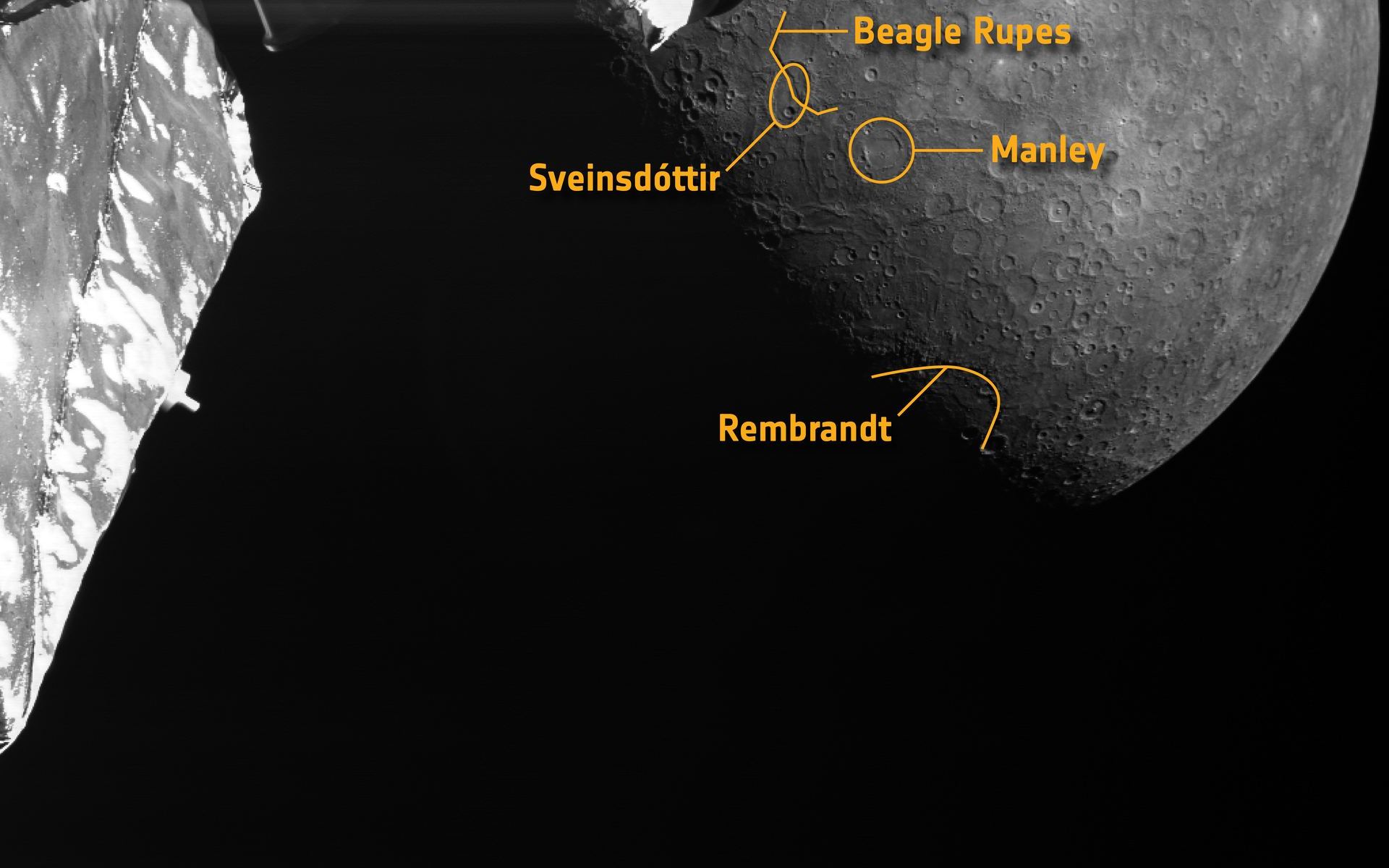ESA’s BepiColumbo continues its journey to Mercury by making another flyby … of Mercury! This is the third of six planned flybys of its destination planet, each of which gives the spacecraft a gravitational deceleration. Eventually, it’ll slow down enough to go into its final operational orbit.
In the most recent flyby on June 19, 2023, the spacecraft sped past the planet’s night side and took a series of images from 236 km (145 miles) above Mercury’s surface. From these 217 images, the BepiColumbo team created a movie of the flyby, which includes a 3D scene.
The images were taken by BepiColombo’s monitoring camera, M-CAM 3. Images were taken about once per minute around closest approach, but much slower in the later phases.
In the video, the planet’s illuminated side appears in the spacecraft’s field of view, with several geological features visible on the surface. The planet’s terminator – the divide between day and night – becomes more distinctive from afar, adding to the beauty of the image sequence. At one point Mercury momentarily appears to hang between the spacecraft’s body and antenna – as if they are giving the planet a hug — before the spacecraft speeds away.
In the last part of the video, a geographically rich area covered by the flyover sequence was reconstructed as in 3D. Visible is the 600 km-long Beagle Rupes curved escarpment and the elongated Sveinsdóttir impact crater that it cuts through. It also features the 218 km-wide (136 mile-wide) Manley Crater and the straight Challenger Rupes scarp. The team said that regions like these will be important for BepiColombo’s main science mission, to learn more about Mercury’s geological history.
Below is a 3D image, and you can use red-green/blue glasses to best enjoy this view. The image was taken from a distance of about 2,982 km (1850 miles), 17 minutes after closest approach, and covers an area roughly 1325.5 km x 642 km (823 X 400 miles).

“Everything went very smoothly with the flyby and images from the monitoring cameras taken during the close approach phase of the flyby have been transmitted to the ground,” said Ignacio Clerigo, ESA’s BepiColombo Spacecraft Operations Manager, in an ESA press release.
The next Mercury flyby isn’t until September 2024, and Clerigo said there are still challenges to tackle in the intervening time. The spacecraft will soon begin to gradually increase the use of its solar electric propulsion, which will help it in its braking manuevers. Eventually, the spacecraft will use it to continually brake against the enormous gravitational pull of the Sun. These additional propulsion periods are called ‘thrust arcs’ and will last from a few days up to two months, with the longer arcs interrupted periodically for navigation and maneuver optimization.

The next arc sequence will start in early August and last for about six weeks.
“We are already working intensively on preparing for this long thruster arc, increasing communications and commanding opportunities between the spacecraft and ground stations, to ensure a fast turnaround between thruster outages during each sequence,” said Santa Martinez Sanmartin, ESA’s BepiColombo mission manager. “This will become more critical as we enter the final stage of the cruise phase because the frequency and duration of the thrust arcs will increase significantly – it will be almost continuous during 2025 – and it is essential to keep on course as accurately as possible.”

